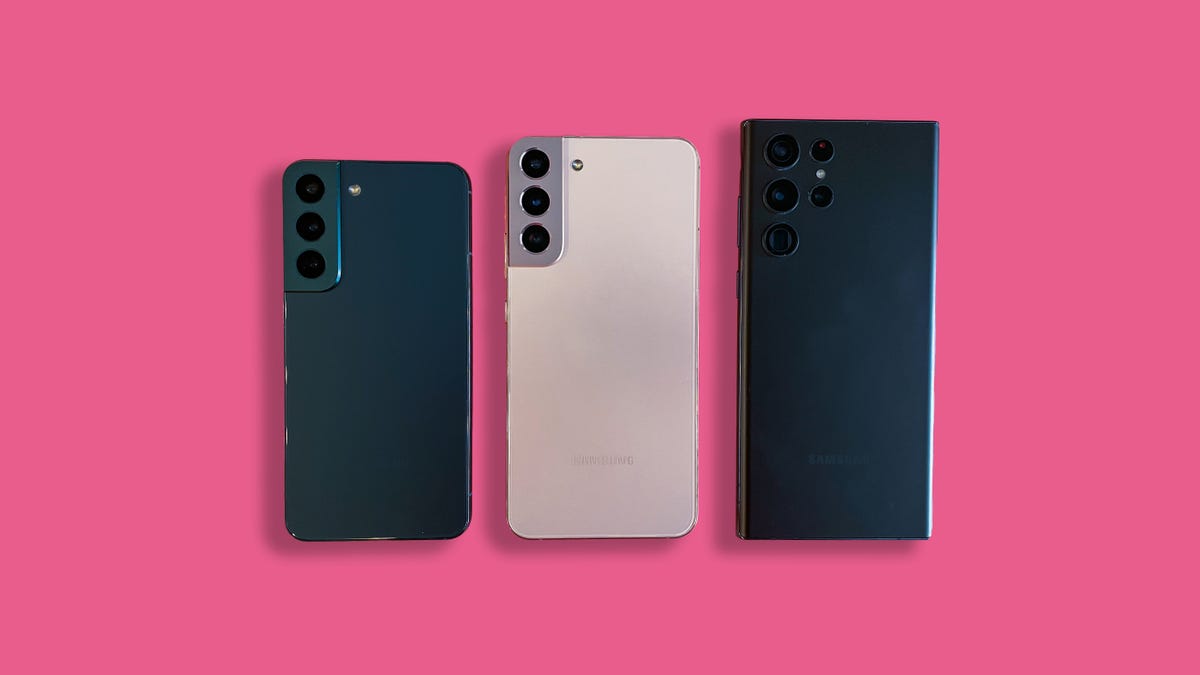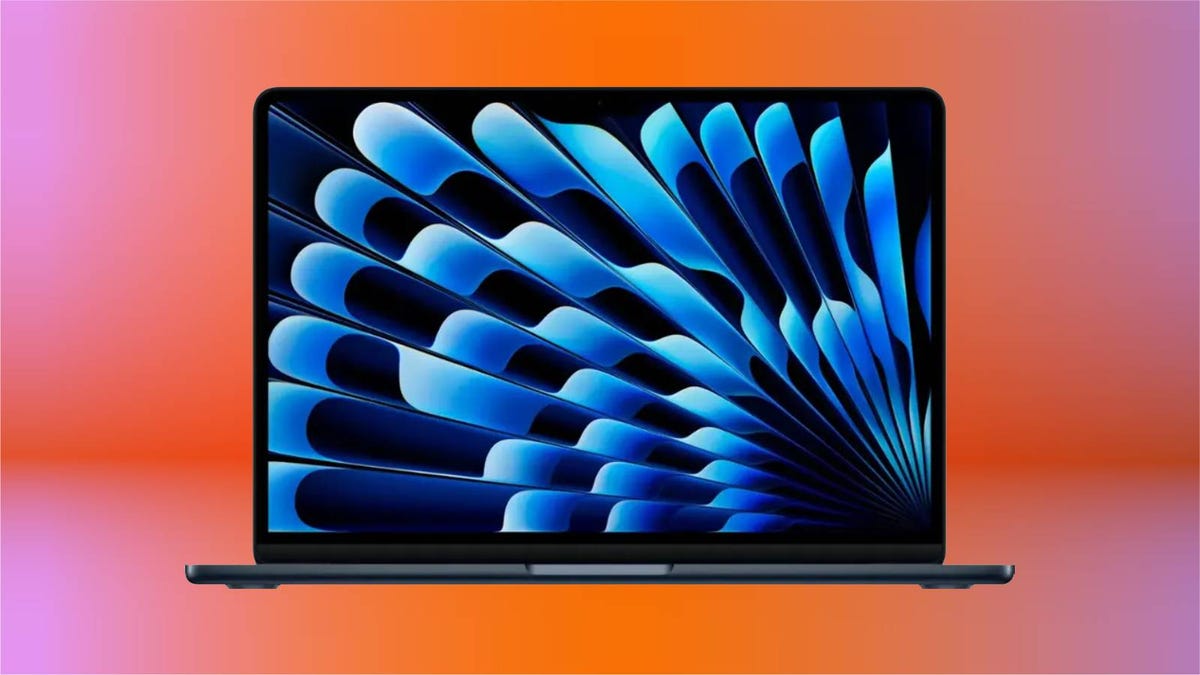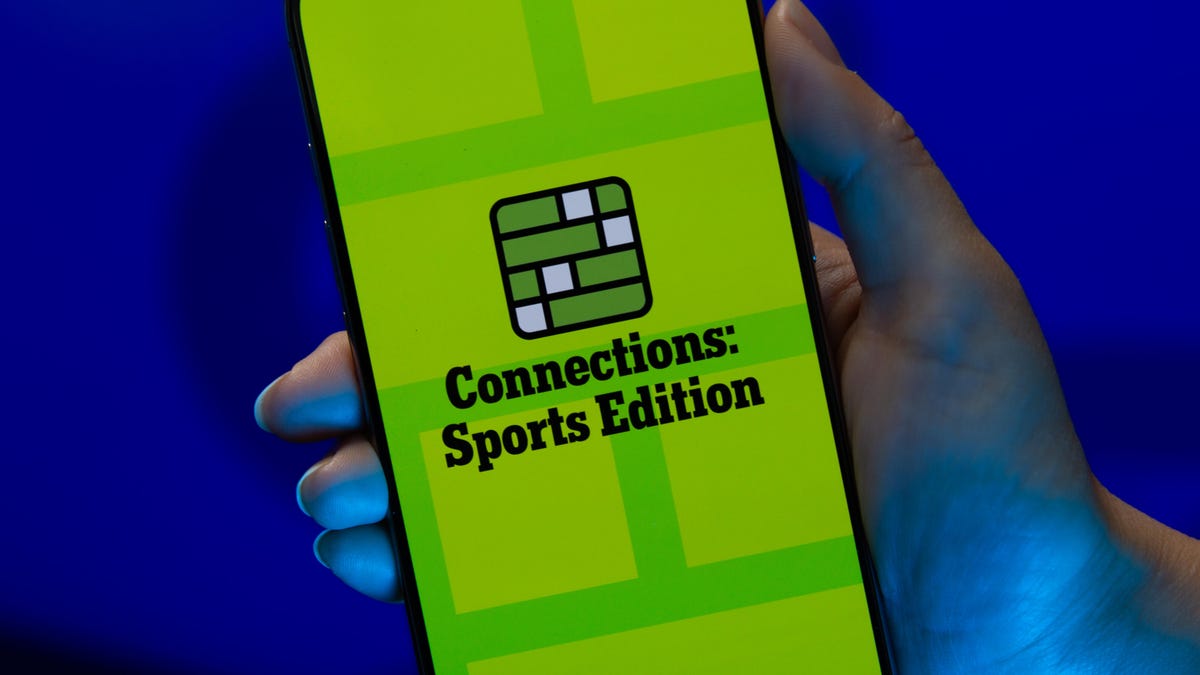Technologies
Samsung’s Galaxy S23 Is Almost Here. What to Expect
The Galaxy S23 Ultra could get a new 200-megapixel camera.

Like clockwork, Samsung releases its new Galaxy S phones in the first quarter of the year. For 2023, that launch is set to happen on Feb. 1 during Samsung’s next event, where we’re very much expecting to see the Galaxy S23.
The Samsung Galaxy S22 range includes some of our top phones from 2022. The base S22 impressed as a more affordable option, the S22 Plus is a superb all-rounder while the all-powerful S22 Ultra blew us away with its stellar camera skills. We even gave the Plus and Ultra CNET Editors’ Choice Awards.
If Samsung maintains the pattern it’s followed for the last three generations, we can expect to see a Galaxy S23, Galaxy S23 Plus and Galaxy S23 Ultra. We’ll know more on Feb. 1, but here’s what we’re expecting based on rumors, leaks and Samsung’s previous product launches. As for what we want to see from the Galaxy S23 lineup, longer battery life and more clever camera features are at the top of my list.
Galaxy S23 release date
Samsung will likely announce the Galaxy S23 series during its next Unpacked event on Feb. 1, which will take place in San Francisco. The event announcement follows previous leaks, including this report from Korean newspaper JoongAng Daily, suggesting an early February launch for the Galaxy S23. A Jan. 6 tweet by prominent leaker Ice Universe also claimed to show a Galaxy Unpacked teaser image with a date of Feb. 1.
Whether the phones are available in stores to buy that month is another matter, as global supply chains are still struggling and it’s possible that there may be a longer delay than usual. But Samsung is already offering promotions for customers in the US who want to reserve a phone early. You’ll get $50 in Samsung credit if you sign up to reserve one device or $100 if you ask to reserve two.
Galaxy S23 models and sizes
We firmly expect Samsung to continue its strategy of launching multiple phone models, each with different specs and prices to appeal to a wide variety of people. Based on Samsung’s history, we’re confident we’ll see an entry level Galaxy S23 model, a step-up S23 Plus with a larger screen and the top-end S23 Ultra. It’s the Ultra that will pack the best tech, including extra cameras, the biggest display and almost certainly the S Pen stylus.
Samsung’s Unpacked event invitation also includes what appear to be three spotlights, which may be a subtle nod to three new incoming Galaxy models.
Reputable leaker Ice Universe posted a detailed rundown of the sizes of the three upcoming phones (via GSM Arena), which put them almost exactly in line with the current sizes of the S22 lineup. As such, we don’t expect any notable differences in screen sizes of any of the range over the predecessors.
Those were 6.1 inches for the Galaxy S22, 6.6 inches for the S22 Plus and 6.8 inches for the S22 Ultra.
Galaxy S23 price
Assuming Samsung launches multiple models, the S23 range will come at three main prices. We don’t expect Samsung to stray from last year’s prices. For reference, the base S22 launched with a price of $800, while the Plus model started at $1,000 and the high-performance S22 Ultra debuted at $1,200 in the US last February.
Galaxy S23 cameras
The cameras look like they might be one of the key areas of focus for the new series. In a recent blog post, the head of Samsung’s mobile experience business, T.M. Roh, teased the camera improvements we can expect to see. «Our pro-grade camera system is getting smarter, offering the best photos and videos in any light among our Galaxy smartphones,» he wrote.
That’s likely to be especially true for the Ultra model, which is usually where Samsung’s biggest camera innovations can be found. We expected the S22 Ultra to include a whopping 200-megapixel image sensor, considering Samsung has launched two of these image sensors and they can be found in other phones. We didn’t see it on the S22 Ultra, but it seems likely that a 200-megapixel sensor will be one of the key bragging rights of the S23 Ultra. Ice Universe also predicts that the Galaxy S23 Ultra’s will have a 200-megapixel sensor. That seems especially likely considering Samsung just announced a new 200-megapixel image sensor for smartphones.
Samsung’s product pages for these sensors boast improved resolution (obviously), but also improved low-light photography by combining sets of smaller pixels into larger individual ones that can capture more light. The S22 Ultra is already one of the best night-time camera phones, beating out the Pixel 7 Pro in our recent tests, so a further burst to its low-light prowess is exciting to hear.
That massive resolution will also help with the phone’s zoom skills, which are already impressive thanks to its 10x optical zoom lens. Recent rumors from Ice Universe suggest that the lens lineup will remain the same across all phones, but that extra resolution should help make zoom shots even more pin-sharp.
There’s a chance we might also see a slight change in the camera’s design, at least on the Galaxy S23 Plus and potentially the Galaxy S23. Rumors from reputable leakers Ice Universe and Steve Hemmerstoffer suggest that the new devices could have circular cutouts for the camera lenses that sit directly on the back of the device rather than on a camera module. The Galaxy S22 Ultra already has a camera like this, but Hemmerstoffer’s leak suggests this style could make its way to the Plus model as well.
Take a look at the photos of the Galaxy S22 Ultra alongside the Galaxy S22 Plus and Galaxy S22 below to see what I mean.
Galaxy S23 battery, processor and other specs
The Galaxy S23 range will almost certainly use the latest Qualcomm Snapdragon 8 Gen 2 processor. In previous years, Samsung used its own Exynos chips for its European models. But a recent Qualcomm earnings call suggested that Samsung will in fact be using Qualcomm’s silicon for every phone in the range.
As for other specs, we expect a minimum of 8GB of RAM on the base models, with 12GB being available on the S23 Ultra. Storage is likely to continue to start at 128GB, with higher capacity options being available at higher prices. And no, we don’t expect a return of the microSD card slot to expand the storage. Sad face.
Recent Federal Communications Commission certifications show that the base S23 will have a 3,900-mAh battery, a step up from the 3,700 mAh of the base S23, while the S23 Plus will also get a battery boost to 4,700-mAh. There’s no official figure for the Ultra model yet, but again Ice Universe suggests that it will have the same 5,000-mAh cell size as the S22 Ultra.
We’ll likely know more as Feb. 1 gets closer. But if the rumors turn out to be accurate, the Galaxy S23 lineup will probably be a modest step up from the Galaxy S22 family.
Technologies
Apple Reportedly Planning Cheaper Macs to Compete With Budget Chromebooks, PCs
Apple doesn’t market its machines as affordable, but that could be changing.

Apple may release more affordable Mac laptops to compete with Chromebooks and budget-friendly Windows laptops as early as 2026.
Bloomberg’s Mark Gurman reports the company has plans to roll out a machine for «well under $1,000.» According to Gurman, the new laptop is already in early production under the codename J700. This matches earlier rumors that a low-cost MacBook Air was in the pipeline at around $599, which would allow Apple to directly compete with other cheap laptops, including Chromebooks and Windows PCs.
A representative for Apple did not immediately respond to a request for comment.
Don’t miss any of our unbiased tech content and lab-based reviews. Add CNET as a preferred Google source.
According to the report, costs will be kept down by using a lower-end LCD that’s smaller than the 13.6-inch MacBook Air, potentially making the new affordable MacBook as small as 12 inches.
Another way Apple could reduce the cost is by using an A-series iPhone chip, which falls short of the top-tier performance offered by the MacBook Pro or the current M4 Air. The upcoming chip may be a variant of the A19 Pro chip that debuted with the iPhone 17 Pro and iPhone Air, which Apple says is capable of MacBook-level performance.
As CNET senior editor Matt Elliott noted, the promise is a bold one. He speculates that the rumored $599 MacBook Air may get the same smartphone processor, or an M-series chip based on that architecture.
Bloomberg also reports that a MacBook Pro with an M5 Pro and M5 Max chip is in development, and Apple has completed work on a MacBook Air powered by the M5 chip, which is planned for release early next year.
The affordable laptop would be designed for casual users, students and businesses, specifically individuals who need a device for tasks such as web browsing, light media editing and document creation. The tech giant is also targeting the education market, as well as iPad buyers who may also want a traditional laptop.
«If this is strictly a move to entice consumers with a high-quality, lower-cost MacBook running MacOS in place of an iPad with a keyboard, then yes, Apple can likely take a chunk of that market,» said Josh Goldman, managing editor at CNET.
«Making inroads into the education market at this point, where Chromebooks have taken over since the pandemic, will prove challenging, though I’m sure it’s nothing that throwing billions of dollars at can’t fix,» CNET’s Goldman said.
This price range is ‘a big departure’
Price is likely to be key here. A $599 price tag would place the new Mac in the same range as more affordable Chromebooks and entry-level laptops, representing a significant change from Apple’s previous strategy.
«Apple potentially dipping into the Chromebook range of $300 to $500 with a new MacBook is a big departure,» said Goldman.
He notes that one of Apple’s most affordable MacBooks is the M4 MacBook Air, available new starting at $999 for the 13-inch model. Walmart still sells a new M1 MacBook Air, a 5-year-old laptop, for around $600.
By contrast, an iPad 11th Gen with a Magic Keyboard will run you around $600, making it clear that Apple’s target market for the rumored device is students and lighter users.
Apple typically hasn’t targeted the lower-priced segment of the market with its MacBooks. However, with consumer wallets under pressure from inflation, high tariffs and layoffs, an affordable MacBook could be imperative and timely.
Technologies
Today’s NYT Connections: Sports Edition Hints and Answers for Nov. 5, #408
Here are hints and the answers for the NYT Connections: Sports Edition puzzle for Nov. 5, No. 408.

Looking for the most recent regular Connections answers? Click here for today’s Connections hints, as well as our daily answers and hints for The New York Times Mini Crossword, Wordle and Strands puzzles.
Today’s Connections: Sports Edition is pretty diverse. The blue answers stuck out to me right away, because some of them are super famous and the others felt like they belonged with those names. If you’re struggling but still want to solve it, read on for hints and the answers.
Connections: Sports Edition is published by The Athletic, the subscription-based sports journalism site owned by the Times. It doesn’t show up in the NYT Games app but appears in The Athletic’s own app. Or you can play it free online.
Read more: NYT Connections: Sports Edition Puzzle Comes Out of Beta
Hints for today’s Connections: Sports Edition groups
Here are four hints for the groupings in today’s Connections: Sports Edition puzzle, ranked from the easiest yellow group to the tough (and sometimes bizarre) purple group.
Yellow group hint: How to see a game.
Green group hint: Soccer.
Blue group hint: Giddy up!
Purple group hint: Not a run play.
Answers for today’s Connections: Sports Edition groups
Yellow group: Ways to consume a sporting event.
Green group: NWSL teams.
Blue group: Triple Crown horse racing winners.
Purple group: Pass ____.
Read more: Wordle Cheat Sheet: Here Are the Most Popular Letters Used in English Words
What are today’s Connections: Sports Edition answers?
The yellow words in today’s Connections
The theme is ways to consume a sporting event. The four answers are in person, radio, streaming and television.
The green words in today’s Connections
The theme is NWSL teams. The four answers are Current, Dash, Pride and Spirit.
The blue words in today’s Connections
The theme is Triple Crown horse racing winners. The four answers are Citation, Gallant Fox, Omaha and Secretariat.
The purple words in today’s Connections
The theme is pass ____. The four answers are breakup, interference, protection and rush.
Technologies
Today’s NYT Connections Hints, Answers and Help for Nov. 5, #878
Here are some hints and the answers for the NYT Connections puzzle for Nov. 5, #878.

Looking for the most recent Connections answers? Click here for today’s Connections hints, as well as our daily answers and hints for The New York Times Mini Crossword, Wordle, Connections: Sports Edition and Strands puzzles.
Today’s NYT Connections puzzle has a diverse mix of topics, including a neat blue category that music fans will ace. And it isn’t too tough, but if you need help, you’re in the right place. Read on for clues and today’s Connections answers.
The Times now has a Connections Bot, like the one for Wordle. Go there after you play to receive a numeric score and to have the program analyze your answers. Players who are registered with the Times Games section can now nerd out by following their progress, including the number of puzzles completed, win rate, number of times they nabbed a perfect score and their win streak.
Read more: Hints, Tips and Strategies to Help You Win at NYT Connections Every Time
Hints for today’s Connections groups
Here are four hints for the groupings in today’s Connections puzzle, ranked from the easiest yellow group to the tough (and sometimes bizarre) purple group.
Yellow group hint: Mess up.
Green group hint: Lead pipe is another one.
Blue group hint: They command the stage.
Purple group hint: Not snow, but …
Answers for today’s Connections groups
Yellow group: Make a hash of.
Green group: Weapons in the game Clue.
Blue group: Iconic soul singers.
Purple group: Rain ____.
Read more: Wordle Cheat Sheet: Here Are the Most Popular Letters Used in English Words
What are today’s Connections answers?
The yellow words in today’s Connections
The theme is make a hash of. The four answers are blow, botch, butcher and spoil.
The green words in today’s Connections
The theme is weapons in the game Clue.The four answers are candlestick, knife, rope and wrench.
The blue words in today’s Connections
The theme is iconic soul singers. The four answers are (Anita) Baker, (Roberta) Flack, (Aretha) Franklin and (Gladys) Knight.
The purple words in today’s Connections
The theme is rain ____. The four answers are bow, coat, forest and maker.
-

 Technologies3 года ago
Technologies3 года agoTech Companies Need to Be Held Accountable for Security, Experts Say
-

 Technologies3 года ago
Technologies3 года agoBest Handheld Game Console in 2023
-

 Technologies3 года ago
Technologies3 года agoTighten Up Your VR Game With the Best Head Straps for Quest 2
-

 Technologies4 года ago
Technologies4 года agoVerum, Wickr and Threema: next generation secured messengers
-

 Technologies4 года ago
Technologies4 года agoBlack Friday 2021: The best deals on TVs, headphones, kitchenware, and more
-

 Technologies4 года ago
Technologies4 года agoGoogle to require vaccinations as Silicon Valley rethinks return-to-office policies
-

 Technologies4 года ago
Technologies4 года agoOlivia Harlan Dekker for Verum Messenger
-

 Technologies4 года ago
Technologies4 года agoiPhone 13 event: How to watch Apple’s big announcement tomorrow
